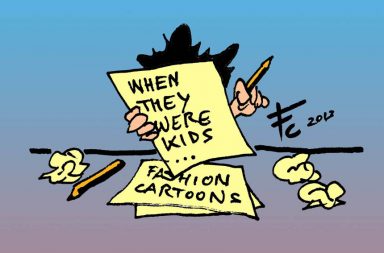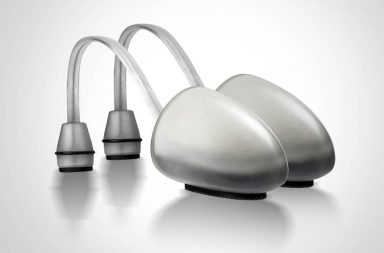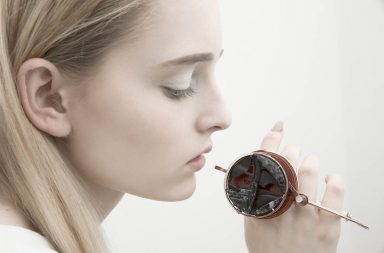Here at So Catchy! Where Fashion Begins, we’ve spent plenty of time telling you about how 3D technology can be used to design and produce footwear as well as the present and future possibilities in the field.
Today we’d like to introduce you to Zoe Jia-Yu Dai who recently (December 2014) presented her Master’s Thesis for Footwear Design at the London College of Fashion.

Like Alejandra Simonetta, she was awarded one of the prestigious Jimmy Choo awards, the Cordwainers Dato’ Jimmy Choo Award, to help finance her work and to produce the end of career collection.
The name of her project, “Breaking the 3D Mould”, describes her intentions: to test the limits of a technology that, despite recent advances in multiple fields, still has a ways to go.

SO CATCHY!: Why did you decide to study footwear design?
ZOE JIA-YU DAI: I decided to study footwear design because footwear design is truly my passion and secondly I appreciate the sense of beauty especially when a female is wearing high heels. Thirdly, for me, footwear is a sophisticated product. It means it’s a challenge for me because each part of the shoe needs to be made precisely and I have to consider what kind of structure can stand the weight of the human body physically. Also, to consider the aesthetics and overall proportion of each pair of shoes when I’m doing a design.
SC!: You won one of the Jimmy Choo Awards for 2014. What did it mean to you and your work?
ZJ: It is the one that Alexandra Simonetta won, they offered two. Firstly, it is really an honour to win this award because my ideas have become more experimental and it allowed me to put my ideas into practice. Winning this award gave me more resources such as better materials and facilities and it is also useful for my future resources for my next collection. All in all, this award makes me more confident in shoe design and it influences me positively on my future potential for design.

SC!: Tell us about Breaking 3D Mould: how did you come up to that idea?
ZJ: I have been interested in 3D new technology since my second term in LCF, and I believe that it could be a new way to assist me in making the shoes I want to make. For example, most of my inspiration comes from nature and organic structures. Since the first term in LCF, these complicated natural structures could be made with 3D printing technology. Later I made my first pair of 3D printed heels to test the initial material, techniques and to find inspiration before starting my final project.
After that, I discovered this cutting-edge technology is not only used for creating shoe components, but also could be utilised in different ways, so I decided to discover ways in which 3-D printing can push the boundaries of these constraints. It’s where this idea, Breaking the 3D Mould, came from.
SC!: In which way do you think your work is breaking the 3D mould?
ZJ: As I said before, pushing the boundaries of possibility with respect to using new 3D technology has been the goal of my final project. I think that any complex structure of heels was possible and I could create more details than I ever could by traditional way.
I wanted to show a technological organic style and I wanted to push the limits of design structures with my collection of shoes, as well as allow for more flexibility and changes in the shoe making processes in the design phase. Because I want to show how the technological development of 3D printing can contribute to making customized footwear.

SC!: Do you think that 3D technology will replace the traditional way shoes have been produced up until now?
ZJ: We don’t know when the next 3D generation will come and what will happen in the next new 3D revolution, but I think new 3D technology won’t completely replace traditional ways of shoe making in the near future, because 3D printed materials are now limited, and most of them are plastic. However, I think current 3D technology could be a good way to help the footwear industry. For example, a designer can get a prototype in a few hours. And it can improve the quality and customization of shoes as well as making a pair of more durable custom-made shoes in a short period of time.
SC!: What do you want to do in the near future?
ZJ: The first thing I want to do in the near future is to continue with research related to this final project, including further exploration of the implementation / infusion of different materials into the moulds already produced. The second thing I want to do is further explore how 3D printing can contribute to the making of men’s and children’s footwear.

SC!: What kind of shoes do you normally wear?
ZJ: It depends on the occasion; at the moment I’m always working in the workshop to make shoes, so I’ve got used to wearing canvas shoes, because they’re not easy to get dirty. I like dermis leather shoes because dermis leather has pores, so it is a breathable material.
SC!: Your favorite footwear label is…
ZJ: Jimmy Choo.
SC!: What is the perfect shoe for you?
ZJ: For me, the perfect shoe has four main points: good design, sophisticated production, proper materials and good promotion.
Photos by Mibuchi Hisashi
Translation and Layout by Michael Padilla




